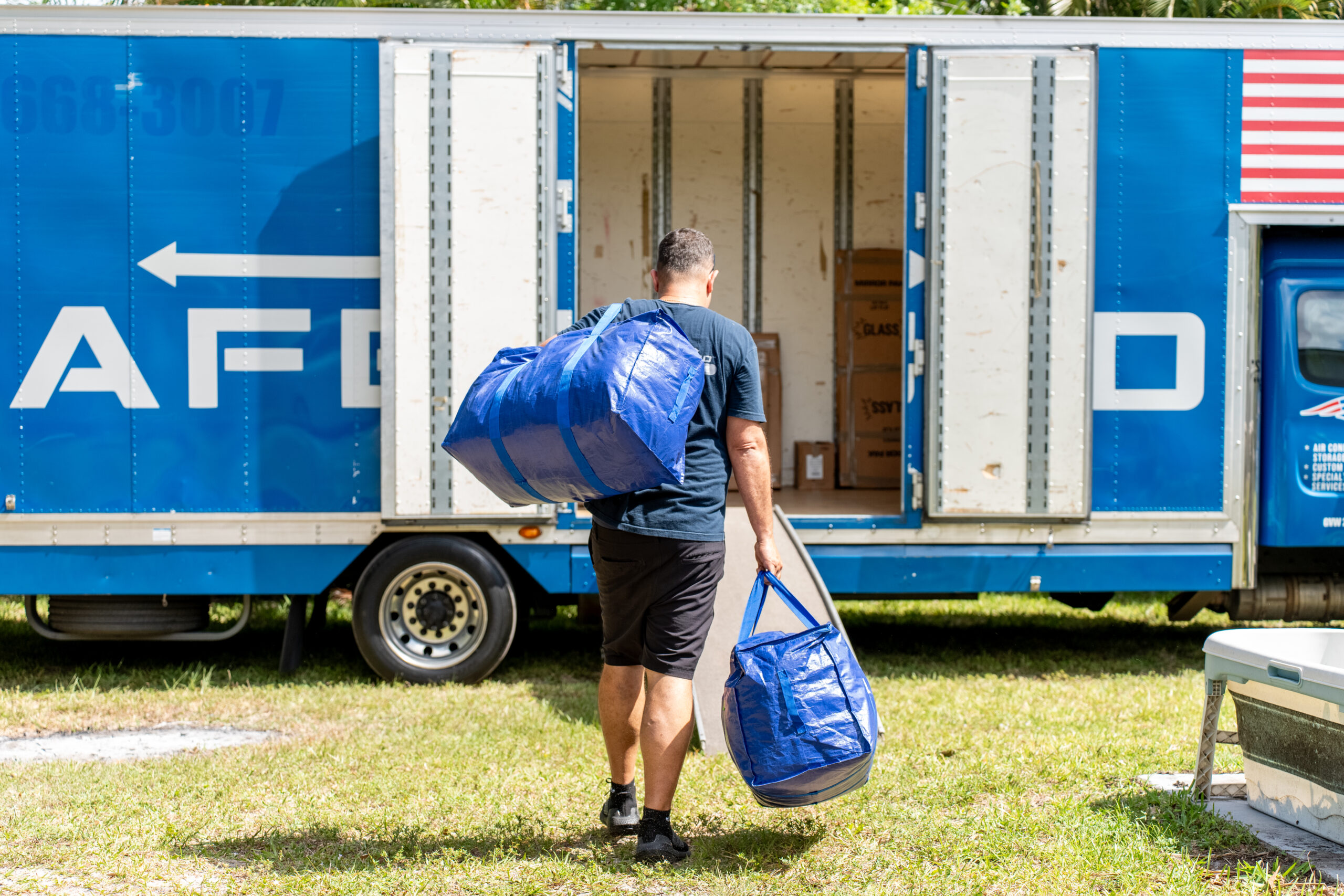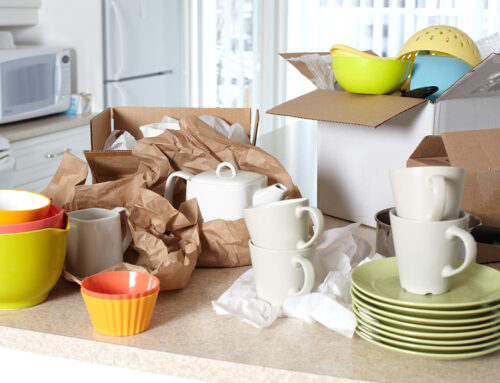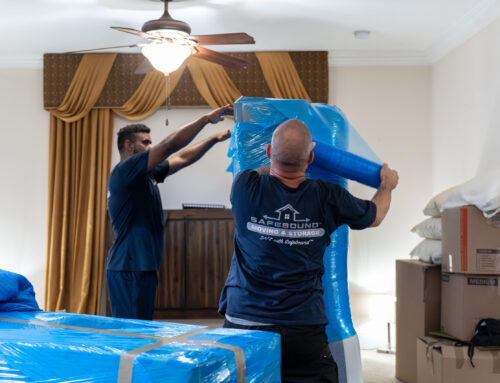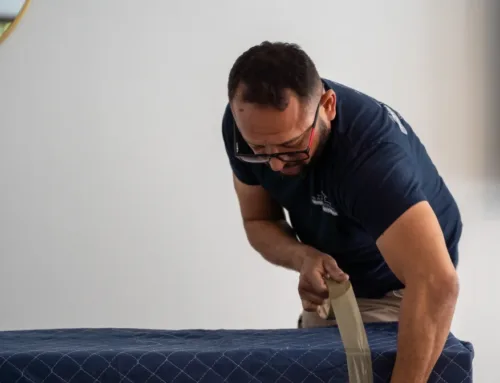Looking for packing tips for moving that actually work? Whether you’re moving across town or across the country, packing is often the most time-consuming and stressful part of any relocation. The good news is that professional movers have spent years perfecting the art of packing efficiently and safely. In this comprehensive guide, we’re sharing insider packing tips for moving that will help you pack like a pro, protect your belongings, and make unpacking at your new home a breeze.
After thousands of successful moves, we’ve learned that proper packing makes all the difference between a smooth relocation and a stressful nightmare. These packing tips for moving will save you time, money, and protect your most valuable possessions.
Essential Packing Materials: What You Need Before You Start
Before diving into our packing tips for moving, gather the right supplies. Having everything on hand before you start will make the process much easier:
Boxes in various sizes:
- Small boxes (1.5 cubic feet) for heavy items like books and dishes
- Medium boxes (3.0 cubic feet) for most household items
- Large boxes (4.5 cubic feet) for lightweight, bulky items like pillows and linens
- Wardrobe boxes for hanging clothes
- Specialty boxes for TVs, mirrors, and artwork
Packing materials:
- Packing paper (never newspaper, which can leave ink stains)
- Bubble wrap for fragile items
- Packing tape (at least 3 inches wide)
- Tape dispenser
- Permanent markers in different colors
- Labels or colored stickers for room identification
- Stretch wrap for furniture protection
- Furniture pads or moving blankets
Pro tip: Don’t skimp on quality packing materials. Cheap boxes and tape often fail during transit, potentially damaging your belongings. These packing tips for moving start with investing in proper supplies.
Room-by-Room Packing Tips for Moving Efficiently
Kitchen Packing Tips for Moving
The kitchen is often the most challenging room to pack due to fragile dishes, oddly-shaped items, and heavy appliances. Here are our best packing tips for moving kitchen items:
Dishes and glassware:
- Wrap each plate individually in packing paper
- Stack plates vertically in boxes (like records) rather than flat
- Place crumpled paper at the bottom of boxes for cushioning
- Fill wine glasses with paper, wrap stems individually, and pack upright
- Never mix heavy items like canned goods with fragile dishes
Pots, pans, and appliances:
- Nest pots and pans together with paper between each piece
- Pack small appliances in their original boxes if available
- Remove glass lids and wrap separately
- Fill empty spaces in boxes to prevent shifting
Pantry items:
- Dispose of opened, perishable items
- Secure lids on bottles and jars with plastic wrap under the cap
- Pack heavy items in small boxes to keep weight manageable
- Group similar items together for easier unpacking
Bedroom Packing Tips for Moving
Clothing:
- Use wardrobe boxes for hanging clothes to prevent wrinkles
- Leave clothes in dresser drawers if the furniture is sturdy
- Vacuum-seal bags work great for bulky items like comforters and winter coats
- Pack off-season clothes first
- Keep a “first night” box with essentials you’ll need immediately
Furniture:
- Remove and bag all hardware (screws, bolts) and tape to the furniture piece
- Protect mattresses with mattress bags
- Wrap furniture in moving blankets or stretch wrap
- Take photos of electronics before disconnecting to remember how to reconnect
Living Room Packing Tips for Moving
Electronics:
- Take photos of all cable connections before unplugging
- Use original boxes for TVs and computers if you kept them
- Wrap cords and tape to their respective devices
- Pack remotes with their devices in clearly labeled bags
- Back up all important data before moving computers
Books and media:
- Pack books spine-down in small boxes
- Don’t overfill boxes—books are heavy
- Use towels or linens as padding between items
- Pack DVDs and CDs in their cases to prevent scratches
Decorative items:
- Wrap picture frames in bubble wrap and mark boxes as fragile
- Pack mirrors and artwork vertically in specialty boxes
- Use cardboard corners for extra protection on framed items
- Photograph valuable items before packing for insurance purposes
Bathroom Packing Tips for Moving
Toiletries:
- Seal all liquid containers with plastic wrap under the cap
- Place toiletries in plastic bags to prevent leaks
- Pack medicines separately in a clearly labeled box you’ll transport personally
- Dispose of expired medications and cosmetics
- Keep daily essentials accessible until moving day
Linens:
- Use towels and linens as padding for fragile items
- Pack bedding in large boxes or vacuum-seal bags
- Label boxes by room for easy unpacking
Advanced Packing Tips for Moving: Professional Strategies
The “First Night” Box Strategy
One of our most valuable packing tips for moving is creating essential boxes for your first night in your new home:
Include:
- Toilet paper, soap, and towels
- Phone chargers and electronics
- Basic tools (screwdriver, hammer, box cutter)
- Snacks and bottled water
- Medications and first aid kit
- Pet food and supplies if applicable
- Change of clothes for each family member
- Important documents and valuables
- Bed linens and pillows
Color-Coding System
Professional movers use color-coding because it works. These packing tips for moving include using colored labels or markers:
- Red = Kitchen
- Blue = Bedrooms
- Green = Living areas
- Yellow = Bathrooms
- Orange = Garage/storage
Mark all sides of boxes so you can identify them regardless of how they’re stacked.
The “Load Last, Unload First” Principle
Pack items you’ll need immediately in a separate area and load them last on the truck. This ensures they’re the first items available at your new home.
Common Packing Mistakes to Avoid
Even with the best packing tips for moving, people make these common errors:
Overpacking boxes: Boxes should be sturdy but liftable. If you can’t carry it comfortably, it’s too heavy.
Under-packing boxes: Partially filled boxes collapse when stacked, potentially damaging contents below.
Poor labeling: “Miscellaneous” boxes are impossible to unpack efficiently. Be specific about contents and destination room.
Waiting until the last minute: Start packing non-essentials 4-6 weeks before your move date.
Using damaged boxes: Old, weakened boxes fail during moves. Always use sturdy, undamaged boxes.
Not protecting fragile items: Proper wrapping is essential. Don’t assume items are safe without adequate padding.
Forgetting to declutter first: Moving is the perfect time to donate or discard items you no longer need. Less stuff means less to pack.
When to Consider Professional Packing Services
While these packing tips for moving help you DIY, sometimes professional packing services make sense:
Consider professional packing if:
- You’re short on time before moving day
- You have valuable or fragile items (artwork, antiques, collectibles)
- You’re making a long-distance move and want extra protection
- You have mobility issues or physical limitations
- You want insurance coverage that often requires professional packing
Professional packers can typically pack an entire home in one to two days, using techniques and materials that provide maximum protection. At Safebound Moving, our packing services include full or partial packing options tailored to your needs and budget.
Learn more about our professional packing services and how we can help make your move stress-free.
Packing Timeline: When to Start
Following a timeline is one of the most important packing tips for moving:
6-8 weeks before:
- Order packing supplies
- Start decluttering and donating unwanted items
- Pack rarely-used items (holiday decorations, out-of-season clothes)
3-4 weeks before:
- Pack guest rooms, storage areas, and garage
- Start packing books and decorative items
- Notify important parties of your move
2 weeks before:
- Pack most of your home except daily essentials
- Confirm moving company details
- Arrange for utilities at new home
1 week before:
- Pack everything except daily necessities
- Defrost freezer if moving refrigerator
- Prepare “first night” boxes
Moving day:
- Pack remaining essentials
- Do final walkthrough
- Keep important documents with you
Specialty Item Packing Tips for Moving
Artwork and Mirrors
Large, fragile items require special attention in our packing tips for moving:
- Use specialty picture boxes or create custom crating
- Wrap in bubble wrap with tape on the wrap, not the item
- Mark “FRAGILE” and “THIS SIDE UP” clearly
- Consider professional packing for valuable pieces
Plants
If you’re moving plants, these packing tips for moving help them survive:
- Water plants 2-3 days before moving (not day-of)
- Pack in sturdy boxes with ventilation holes
- Secure pots to prevent tipping
- Keep plants in your vehicle rather than the moving truck when possible
- Check regulations for interstate plant transport
Important Documents
Never pack valuable documents in the moving truck:
- Passports, birth certificates, and social security cards
- Financial documents and tax records
- Insurance policies
- Medical records
- Jewelry and small valuables
Keep these items with you during the move.
Sustainable Packing Tips for Moving
Eco-conscious packing tips for moving reduce waste:
- Use reusable plastic bins instead of cardboard boxes
- Source free boxes from local stores or online marketplaces
- Use towels, linens, and clothing as padding instead of bubble wrap
- Rent plastic dish packs for kitchen items
- Recycle or pass along boxes after unpacking
- Choose biodegradable packing peanuts if needed
The Cost-Benefit Analysis: DIY vs. Professional Packing
Understanding the true cost helps you decide which packing tips for moving route to take:
DIY packing costs:
- Packing materials: $200-500 for an average home
- Your time: 20-40 hours depending on home size
- Potential for damage without professional techniques
- Physical strain and stress
Professional packing benefits:
- Materials included in service
- Faster completion (1-2 days)
- Expert techniques minimize damage risk
- Often required for full insurance coverage
- Reduced stress and physical strain
For many homeowners, partial packing services offer the best compromise—handling fragile items, kitchen, and specialty items professionally while packing simple items yourself.
Explore Safebound Moving’s flexible packing options to find the right balance for your move and budget.
Final Packing Tips for Moving: Day-Before Checklist
As moving day approaches, these final packing tips for moving ensure nothing is forgotten:
- Confirm moving truck arrival time
- Set aside items you’re transporting personally
- Pack a cooler with drinks and snacks for moving day
- Charge all devices fully
- Have cash on hand for tipping movers
- Keep cleaning supplies accessible for final cleanup
- Double-check closets, cabinets, and storage areas
- Review your inventory list
Making Your Move Stress-Free
The best packing tips for moving combine organization, proper materials, and realistic timelines. Whether you choose to pack everything yourself or hire professional packers, these strategies will help protect your belongings and simplify your relocation.
Remember, you don’t have to do it all alone. At Safebound Moving, we offer customizable packing services to match your needs—from full-service packing to just handling your most fragile items. Our experienced team knows all the packing tips for moving that ensure your belongings arrive safely at your new home.
Ready to plan your move? Contact Safebound Moving today for a free quote. Let us know if you’d like help with packing, and we’ll create a customized solution that fits your timeline and budget. With our expert packing tips for moving and professional service, your next move will be your smoothest yet.
For more helpful moving advice, check out our complete blog with guides on timing your move, choosing movers, and more.
External Resources:




